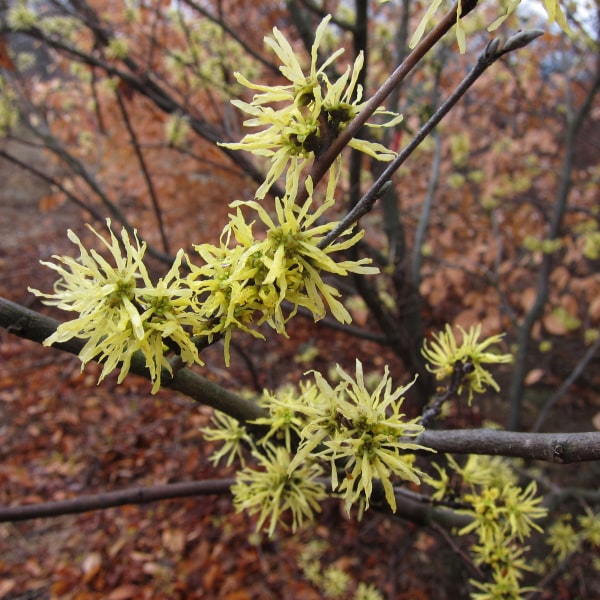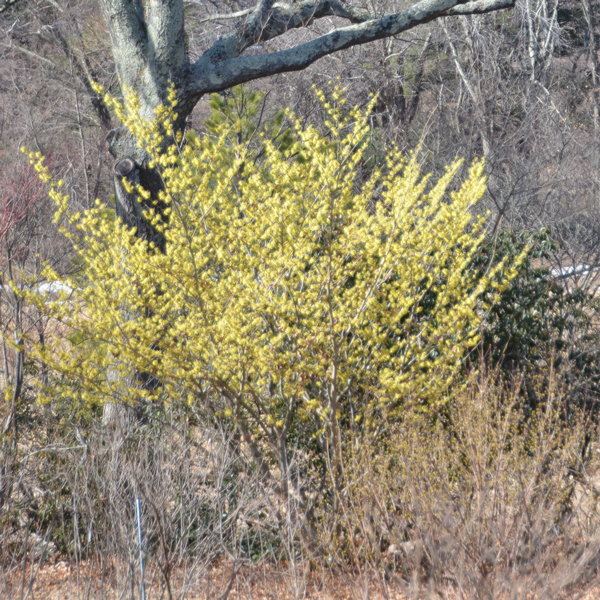
Common witch hazel (Hamamelis virginiana) is a unique American shrub! I know of no other hardy woody plant that consistently blooms so late in the season. The distilled extract of its twigs, leaves and bark is cited as the source of the ages-old Connecticut-born astringent bearing the Dickinson’s Witch Hazel name. And dowsers swear by the use of its forked branches as their preferred “divining rod” tool, reputed to locate underground water sources.

Native to open woodlands from Canada to Florida, Hamamelis virginiana grows slowly to a 15-20 ft. multi-stemmed vase-shaped shrub with zig-zag branches, eventually colonizing by underground suckers. Coming into flower as early as October as its fall foliage turns golden-yellow, it often extends into December, arguably the longest flowering period of any woody plant. Producing its best blooms in full sun, it also grows well in shade and at the edge of the woods.
With the exception of its unique end-of-year bloom timing, common witch hazel shares nearly all of the features of its beginning-of-spring-flowering cousins from Asia (H. mollis, H. japonica, H. x intermedia) and the southern USA (H. vernalis). Each individual witch-hazel flower is comprised of four delicate, twisted, strap-like, lemon-yellow petals that unfurl on warm days and re-curl during the cold. Clusters of fragrant flowers growing along the branches create an attractive show, particularly against a dark background, but multiple plants or dense colonies are more effective in creating a stronger visual impact.
Recent selection and breeding has resulted in several landscape-worthy cultivars with more substantial flower and growth characteristics. Specialty nurseries are now offering ‘Little Susie’, a compact-growing selection with a nice display of larger flowers, well suited for smaller gardens; ‘Mohonk Red’ and ‘Vincent’s Red’, both featuring yellowish flowers with darker rosy-pink centers, originated respectively in upstate New York and Connecticut; and ‘Harvest Moon’, whose autumn leaves drop quickly and cleanly to best show off its profuse and particularly-large yellow flowers.
Not surprisingly, garden centers rarely carry Hamamelis virginiana and its cultivars–by the time these come into bloom, most of us have finished adding new plants to our gardens, focusing instead on preparing for winter. But if late garden bloom appeals to you, inquire; when enough customers ask about plants they want, retailers are often more than happy to satisfy this new interest.
About the Author
Wayne Mezitt is a 3rd generation nurseryman, a Massachusetts Certified Horticulturist, now chairman of Weston Nurseries of Hopkinton, Chelmsford & Hingham MA, and owner of “Hort-Sense”, a horticultural advisory business. He currently serves in various capacities on several horticulturally-related organizations, including the Massachusetts Horticultural Society at The Gardens at Elm Bank in Wellesley MA, and chairman for the Massachusetts Invasive Plant Advisory Group (MIPAG).







